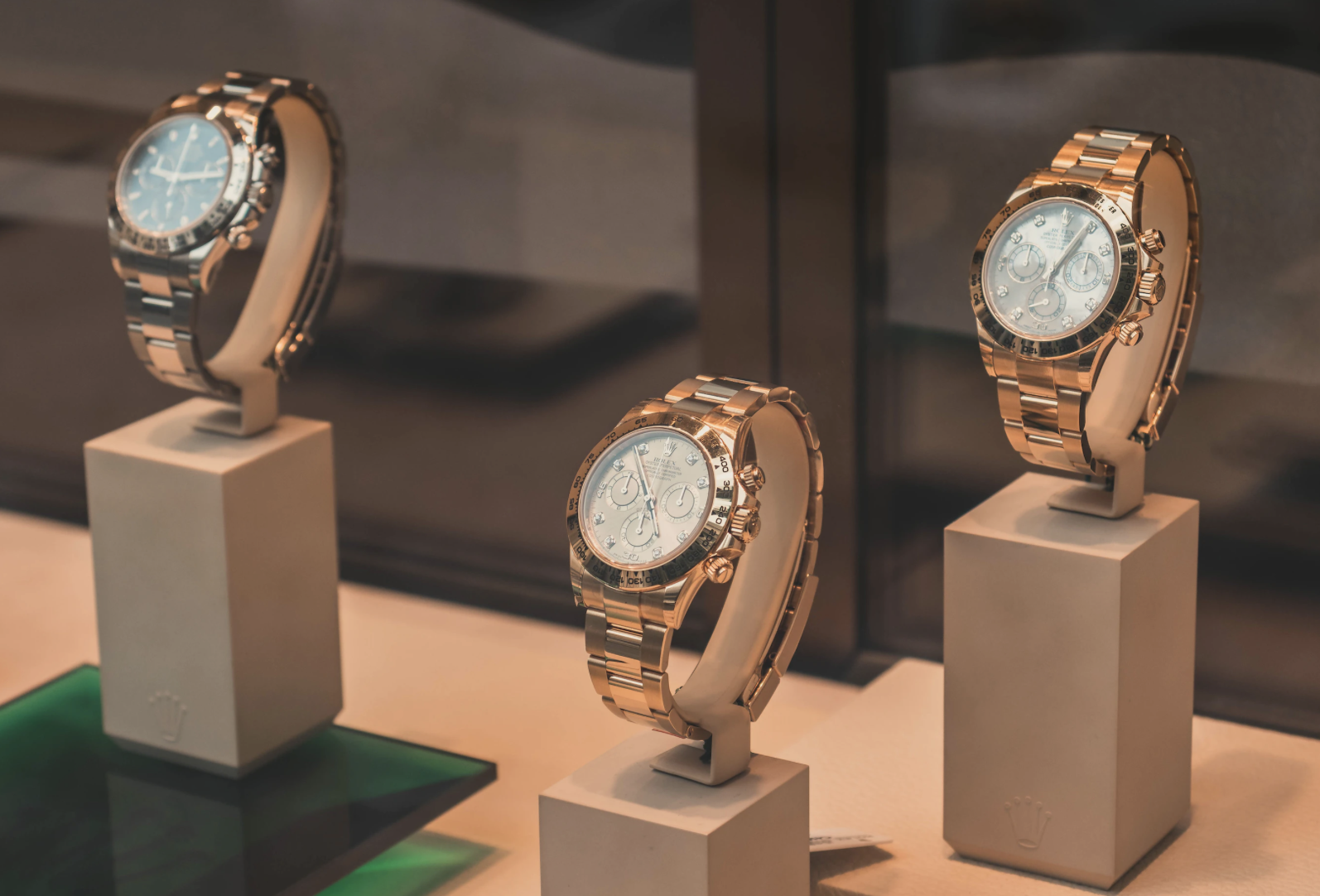Rolex has been shut down in its attempt to invalidate another party’s trademark registration for a name that the public coined to refer to a couple of rare watch models that it created back in the 1970s. In a recently-issued decision, the U.S. Patent and Trademark Office (“USPTO”)’s Trademark Trial and Appeal Board denied Rolex’s bid to cancel watch brand Mark Kiger’s registration for “MILSUB” for use on watches, finding that while the media and watch enthusiasts have referred to two of Rolex’s Submariner models as “MilSubs,” the watch giant failed to establish sufficient rights in MILSUB to support a Section 2(d) claim under the Trademark Act since it has never actually used the mark in commerce.
Setting the stage in its September 5 decision, the Trademark Trial and Appeal Board (“TTAB”) stated that on the heels of the USPTO rejecting Rolex’s April 2019 application for registration for “MILSUB” for watches due to its similarity to Kiger’s existing registration, Rolex sought to get Kiger’s registration. The basis of Rolex’s cancellation proceeding was that it maintains common law rights in the mark that predate Kiger’s rights/registration, as consumers and the media refer to the two dive watch models that it crafted for the United Kingdom Ministry of Defense in the 1970s as “MilSubs.”
Interestingly, despite its claim of common law rights in the MILSUB mark, Rolex conceded in connection with the cancellation proceedings – which it initiated in November 2019 – that it “has never used the term MilSub as a trademark” in connection with the watches at issue. Instead, Rolex relied on the fact that the “MilSub” became a common identifier for the watches as they rose in popularity among watch collectors and other enthusiasts decades later (as evidenced by media articles and secondary market listings for the watches).
Citing decisions from the TTAB and the Federal Circuit that have found that public use of a trademark can, under certain circumstances, create enforceable rights for another party, Rolex claimed priority due the public’s use of “MilSub” in connection with the two watch models – Rolex Submariner models 5513 and 5517 – prior to May 8, 2014, which is when Kiger filed his trademark application for MILSUB.
In short: Rolex argued that public uses of the term MilSub to refer to the watches it crafted for the UK military gave rise to trademark rights that it owns and can enforce.
The TTAB recognized that “public use of a mark, such as a nickname or abbreviation of an existing mark or trade name, will sometimes create enforceable rights [for] another party,” but held that “that approach is limited to scenarios where the party claiming the rights had ongoing trade and a recognized mark it was using in connection with that trade.” In such a scenario, “the rights created by the public’s use complement the claimant’s existing rights in other marks or names.”
That “does not fit the facts of this case,” according to the TTAB, as Rolex has “unquestionably continued to sell watches since it sold the two MilSub models in the 1970s, [but] it has not continued the particular business of selling those watch models.” (Rolex exclusively sold limited quantities of the two models at issue to the UK military for distribution to divers.) As distinct from the cases that Rolex cites in its support, such as Big Blue Prods. v. IBM, in which IBM had been selling typewriter ribbons for many years while it was generally known to the public as “Big Blue,” and went on to use BIG BLUE as a mark for typewriter ribbons, there is no “ongoing business” at Rolex to which the disputed mark relates.
As a note: The lack of “ongoing business” at Rolex to which the disputed mark relates is worth noting. This scenario could prove interesting for brands from a broader resale POV (which Rolex is engaging in by way of its Certified Pre-Owned program) as courts have held that a trademark tied to a very limited or otherwise discontinued product may survive a non-use challenge if the trademark holder is using the mark in post-sale activities, such as reselling and/or issuing certificates of authenticity for such goods. This is what the Court of Justice of the European Union held in a case centering on Ferrari’s Testarossa trademark.
According to the TTAB, the case at hand “presents the opposite of the scenarios that appear to have led courts to recognize enforceable rights based solely on public use,” as in those scenarios, the public use was being made while the goods were being sold. For example, “even before IBM began expressly using BIG BLUE as a trademark on typewriter ribbons, [it] was selling typewriter ribbons and was widely-known by [consumers as] the nickname Big Blue.” Here, the TTAB found that tthere is “no suggestion or evidence that Rolex is generally known as MilSub, nor is there any suggestion, or evidence, that the term MilSub was ever used by anyone back in the 1970s to identify Rolex or any of its watches.”
In other words, once the MilSub term was adopted by the public to refer to the Rolex watches, “Rolex was not selling any watches that the public identified as MilSub watches,” which is significant, as “trademark rights exist only in connection with trade and Rolex had no trade in what the public came to call MilSub watches.”
TLDR: “Rolex’s attempt to assert rights in the term MilSub fails because no one, not Rolex and not the public, has ever used the term MilSub to identify a currently available watch sold by Rolex. With no trade, ever, under the term MilSub, Rolex cannot assert rights in the term.”
Additional Arguments
A couple of additional arguments are worth mentioning. Primarily, there is Rolex’s argument that the “MilSub” term actually refers to more than just the two UK military models and is a reference to any “Rolex Submariner watch that was used in or issued to the armed forces of any nation.” The TTAB was unpersuaded, holding that instead of using this broad understanding of MilSub to show that it was using the term during and after the time that the public began using it to refer to Rolex watches, the Swiss watchmaker only used this to support its claim that it was selling MilSub watches before the 1970s. “It did not submit evidence showing additional sales of Military Submariner watches after the 1970s,” according to the TTAB, which held that even if it accepted this argument, “it would not help Rolex show trade in the goods during the period that the MilSub term was being used by the public.”
As for Kiger, the company claimed that “MILSUB is an abbreviated nickname for military submersible and is a generic term that is used to refer to dive watches that have a rotating bezel.” There is “some evidence of use of the term MilSub beyond the Rolex military models 5513 and 5517,” namely, an Omega military dive watch. (This is, of course, a striking argument for a party that has a registration for MILSUB to make.) Again unpersuaded, the TTAB held that there is not “sufficient evidence to support Kiger’s argument that the term MilSub refers to more than the two Rolex models sold to the British military.”
Rejecting both parties’ attempts to establish broader use of the MilSub term, the TTAB held that “it is the scarcity of the real MilSub watches” – i.e., the 5513 and 5517 models – “that has driven interest in these watches, and that scarcity is inconsistent with the parties’ arguments for a broader meaning of the term MilSub. If MilSub watches included all Rolex Submariner models used by the military, the watches would not be as rare, and would lack the high monetary value that drives the interest in them. Kiger’s argument – that MilSub watches include Rolex and other brands – is also effectively refuted by the very scarcity that created this market and the prevailing meaning of the MilSub term.”
THE BOTTOM LINE: The TTAB denied Rolex’s Petition to Cancel because it did not establish rights sufficient to support a Section 2(d) claim since it “has never used the MILSUB mark, and the public uses of the term MilSub were not in connection with any ongoing trade engaged in by Rolex, which means the public uses did not create enforceable rights owned by Rolex.”


